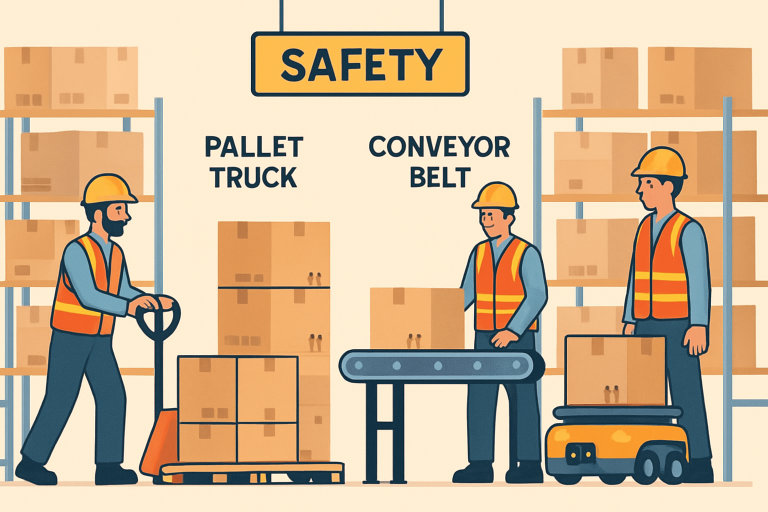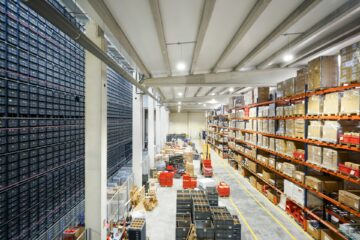Modern warehousing demands not just speed and efficiency, but a heightened focus on safety to protect both employees and assets. The continual evolution of material handling equipment (MHE) is central to this transformation, enabling warehouses to minimize workplace risks and maximize output. Tools like pallet trucks exemplify this shift, streamlining the movement of goods while incorporating robust safety features that reduce accidents and strain-related injuries.
Such innovations are not only helping to avoid common workplace incidents but are also reshaping operational workflows. By integrating advanced safety measures into everyday warehousing operations, businesses are achieving impressive gains in both productivity and workforce well-being.
Enhanced Safety Features in Modern MHE
The safety of warehouse employees hinges on the reliability and innovation of the tools they use. Modern MHE integrates features such as anti-slip platforms, intuitive safety alarms, and automatic braking systems to minimize the risk of on-the-job accidents. Enhanced stability controls are standard, preventing tip-overs and collisions—a leading cause of warehouse injuries according to the Occupational Safety and Health Administration (OSHA). These technologies not only safeguard workers but also reduce operational costs by maintaining high uptime and minimizing insurance claims.
Automation and Robotics Integration
Warehouses are increasingly turning to automation and robotics not only for efficiency, but also to create safer environments. Automated Guided Vehicles (AGVs) and Autonomous Mobile Robots (AMRs) now perform repetitive transport and sorting tasks, keeping human workers out of hazardous zones. This shift enables personnel to focus on higher-level operations, significantly reducing the risk of repetitive stress injuries and accidental collisions that can occur with manual handling. Industry leaders like Amazon have shown that large-scale automation can both accelerate throughput and significantly cut on-site injury rates.
Ergonomic Designs for Worker Well-being
Ergonomically designed MHE is crucial for minimizing strain and improving job satisfaction among warehouse workers. New designs feature adjustable controls, cushioned grips, and clear lines of sight to lessen fatigue and reduce the likelihood of injuries from awkward body movements. Anti-fatigue platforms, height-adjustable workstations, and clear visual cues help operators stay alert and comfortable throughout long shifts. Such improvements are supported by studies that highlight the role of ergonomics in reducing musculoskeletal disorders and increasing productivity.
Sustainability and Energy Efficiency
Warehouse safety is increasingly intertwined with sustainability and energy efficiency. The shift toward electric forklifts and battery-powered equipment helps decrease both carbon footprint and operator exposure to harmful emissions. Eco-friendly warehouse layouts—such as LED-lit spaces, improved airflow, and recycled construction materials—not only contribute to a healthier planet but also reduce slip-and-fall hazards and other risks associated with traditional energy sources. Many companies are publicizing their green initiatives to meet global sustainability benchmarks and ensure a safer environment for staff and the community.
Data-Driven Insights and IoT Integration
Real-time data collection, courtesy of Internet of Things (IoT) technology, is transforming how MHE is managed and maintained. Embedded sensors monitor key metrics, including load weight, forklift speed, maintenance schedules, and equipment status. Predictive analytics based on this data allows for preemptive action against potential breakdowns or unsafe usage patterns. As a result, unexpected equipment failures and the resulting hazards are minimized, while the lifespan of valuable warehouse assets is extended. This proactive approach fosters a more secure and efficient work environment, where risks are identified and addressed before they can escalate into incidents.

Real-World Impact of Safe MHE
Warehouses adopting the latest in material handling safety are seeing substantial benefits. Take, for example, a regional retailer that replaced manual systems with modular conveyors and automated sortation tools, reporting both increased adaptability during seasonal peaks and improved safety metrics. Temporary routing modules could be integrated on the fly, reducing manual handling requirements and ensuring uninterrupted, injury-minimized operations. The tangible impact is evident not only in fewer workplace incidents but also in faster order processing and higher employee retention rates.
Future Trends in Material Handling Safety
The future of warehouse safety is bright, thanks to new technologies on the horizon. Artificial Intelligence (AI) is being developed to deliver even more innovative predictive analytics, while next-generation robotics will offer even safer and more adaptive solutions. Ergonomic designs will continue to evolve, driven by industry feedback and ongoing research into worker health and productivity. As regulations tighten and expectations for safer workplaces increase, these trends will push the boundaries of what’s possible, resulting in even safer and more adaptable warehousing.
Safe material handling equipment is not just a benefit for warehouse staff but a competitive advantage in the logistics sector. Businesses investing in advanced safety technologies are setting new standards for operational excellence, staff retention, and sustainable growth.












